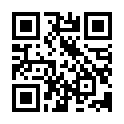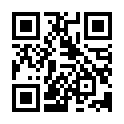Analysis
Should radiographers fear the rise of AI automation?
Education is the key to implementing artificial intelligence safely and effectively, argues Geraldine Doherty
Geraldine Doherty
Geraldine Doherty
Many of us have heard the term artificial intelligence (AI) and are perhaps aware of some real-life examples. For years we have been fed a steady stream of headlines touting that AI will revolutionise the world around us but have we truly witnessed this yet?
Such predictions of an AI-powered world date back as far as the advent of the term itself, which was coined in 1956 at the Dartmouth Conference by John McCarthy, the man considered to be the "father of AI".
I am a new PhD researcher, in my infancy within the radiography profession. The insurgence of AI, by happenstance, is occurring at the same time. My research aims to look at the workforce’s understanding of AI and at ways that we can build on the profession’s understanding and knowledge, both at curriculum level and with ad-hoc training provision.
Utopian and dystopian visions
The dream of a true AI has been an obsession and goal of mankind since the inception of the concept. We are served a banquet of utopian and dystopian visions of AI by the media – if life were like the movies, by 21 October 2015 we would all have been cruising to our clinical departments on Back to the Future-style hoverboards1. Or for those who prefer the darker side of science fiction, we could soon be revealed to be just organic battery packs used by a sentient AI overlord, according to The Matrix2.
If I had to choose, my personal favourite depiction of AI would be Baymax, the bumbling "personal healthcare companion" from Disney’s Big Hero 63. Less outlandish portrayals, such as Hank Scorpio in The Simpsons4 with his home of the future, are more reminiscent of mid-20th century cartoon strip "Closer Than We Think!"5 ideals that demonstrated technology as the key to a better way of life, with automation taking care of burdensome chores and enhancing crop yields, improving travel and general wellbeing. This reverie is closer to what we are experiencing today. But what is the ubiquitous AI?
We know it makes for good sci-fi entertainment. In his 2004 paper, McCarthy defined AI as "… the science and engineering of making intelligent machines, especially intelligent computer programs. It is related to the similar task of using computers to understand human intelligence, but AI does not have to confine itself to methods that are biologically observable." 6
Practical applications
Unless you are tech-savvy (which I understand many of you might be!) that still doesn’t really explain very much. Rather than get bogged down in definitions or carried away with Hollywood flights of fancy, let’s instead think of practical applications of AI.
Do you know what AI technologies are present in your home? What about in your local grocery store? In your clinical environment? For a long time, science fiction was just that, fiction. Increasingly though, AI is being embedded in all aspects of life. But to what end? Towards the end of 2022, the creative arts world was rocked by two new AI systems: an open-source AI chatbot named chatGPT7, which can write stories and essays comparable to those created by humans, and an image generator named Lensa8, which can create digital art from uploaded selfies.
Dissenters are citing ethical quandaries as their main issues with these technologies, along with worries that AI-generated material will devalue "true" art. Another concern is a lack of understanding of how the AI generates its output. These issues are not confined to the creative world – they have been relevant in our world of healthcare since AI technologies were first implemented.
AI in healthcare
The reality is that AI in healthcare is being rolled out at a startling pace. Reams of studies are being published, funded by manufacturers and the industry, lauding the capabilities of their software and comparing its performance with that of clinicians – often matching and, in some cases, outdoing its human counterparts.
This and the fact that machines don’t suffer fatigue and can process unfathomable amounts of data at mind-blowing speeds mean it's no wonder that AI has been referred to in some publications as "the enemy"9, threatening to automate processes, replace some roles and make others completely obsolete10,11.
This is not the case. What is happening is that AI is being used to assist healthcare providers. One example is MASTER-TBI12, a collaborative project between the Pawsey Supercomputing Centre in Perth, Western Australia, and three regional trauma centres. This technology has recently been able to improve patient outcomes in the ICU through the collation and analysis of a large dataset of historical patient outcomes and has helped predict adverse events in patients with moderate to severe traumatic brain injuries (TBI).
This is a prime example of how AI can enhance and supplement healthcare. Being able to anticipate such events enables ICU staff to intervene before the event occurs, demonstrating symbiosis between human skill and AI capabilities.
As with all great innovations, hype occurs around the release of a new AI technology. But this is not the first outing for AI and radiology. This is a relationship that began back in the 1960s, when computer-aided diagnosis (CAD) systems were introduced in mammography. It ultimately failed when it became apparent that the gains in sensitivity were at the sacrifice of specificity13, and that workload was actually increasing due to radiologists having to review images that had been erroneously flagged as suspicious by the software.
This episode led to reluctance within the medical community to adopt AI technology in relation to patient care. More recently, however, it has become accepted that AI has myriad potential applications in the world of medical imaging, from task automation to image interpretation. A total of 240 AI or machine-learning tools gained CE Mark approval for use in medical imaging between 2015-202014. Have any of these tools crept into your departments? Perhaps they are already there, expensive and underused because they failed to live up to expectations or are not yet trusted?
Are we then destined for a future with Star Trek-style healthcare and artificially intelligent systems that can test, diagnose and treat? You, my colleagues on the frontline, know better than anyone that such a future is not yet on the horizon.
The human touch
The technology will continue to advance rapidly and offer more complex and nuanced healthcare support, but AI will never be able to truly emulate human empathy or sincerity, to know when to whisper words of reassurance to the patient who, despite claiming to be fine, is betrayed by the fear on their face. An algorithm is not able to give a short squeeze of a patient’s hand before sending them through the scanner.
AI is a tool that has the potential to change the way we work. It is to be embraced and harnessed, made to work for us and patients, enhancing how we do the job not taking it from us. But to embrace the unknown is difficult.
A wise general once said: “Know thy enemy”15. This sentiment is echoed (albeit in a more academic fashion) in publications from the Society of Radiographers16, NHS17 and government and other regulatory bodies18, which all outline education on AI as a future priority. Education is the key to being able to understand AI and implement it safely and effectively so, as a profession on the cutting edge of healthcare and technology, we must ensure we are educated about any technology that will be used in clinical practice. We can achieve symbiosis with AI but to do so we must understand it.
Conclusion
Although light-hearted in essence, my point is that to fulfil our roles as healthcare professionals we must move with the tide of change. To allow AI to permeate into clinical practice without educating ourselves about its capabilities and limitations would be ethically and morally reckless.
Radiography is, arguably, the most technologically driven field in healthcare, so it stands to reason that we are likely to be the practitioners who will embrace AI and ensure it is implemented safely, cost-effectively and with the best interests of patients at the centre of everything we do. To achieve this, we must understand the core concepts of AI so that we can appropriately utilise it in our individual roles and the profession as a whole.
I invite you to help me begin a process of evaluating the workforce’s current knowledge of AI, your expectations of how it could/should be implemented and your ideas about the future of radiographic practice and education in this new era.
Recent studies have aimed to gauge your opinions and perceptions of AI. I am interested in finding out what you know (or think you know) about AI, and what you would like to know, and to use this to facilitate a discourse on how we can modify the radiography curriculum to effectively deliver education on AI at appropriate stages of a radiographer’s career.
You can do your bit to assist in this endeavour by completing the short, anonymous survey via the link/QR code below. Data collected will be used to inform the basis of a study looking at ways to improve educational provision for all imaging department staff to ensure that we, as a profession, remain at the forefront of diagnostic support.
Have your say in the survey
Educator survey
Educator survey
Staff/student survey
Staff/student survey
About
Geraldine Doherty is a PhD researcher at the University of Ulster, who graduated in diagnostic radiography and imaging from the University of Ulster in 2021.
The SoR will be organising a series of webinars on this topic in the Autumn - look out for more details coming soon!
References
1. Back to the Future. [Film] Directed by Zemeckis R. United States: Universal Pictures 1985.
2. The Matrix. [Film] Directed by Wachowski L and Wachowski L. United States: Warner Bros 1999.
3. Big Hero 6. [Film] Directed by Hall D and Williams C. United States: Disney 2015.
4. You Only Move Twice. [Television] The Simpsons. United States: Gracie Films 5 January 1997.
5. Radebaugh A. Closer Than We Think!. Cartoon strip. Chicago Tribune; 1958-1963.
6. McCarthy J. What is artificial intelligence? Dartmouth Artificial Intelligence Conference. Available at http://jmc.stanford.edu/articles/whatisai/whatisai.pdf. Accessed 4 November 2022.
7. Roose K. The brilliance and weirdness of ChatGPT. The New York Times. Available at https://www.nytimes.com/2022/12/05/technology/chatgpt-ai-twitter.html. Accessed 5 December 2022.
8. Marcus J. Artists decry the use of AI-generated art: "I’m concerned for the future of human creativity". The Independent. Available at https://www.independent.co.uk/news/world/americas/ai-art-lensa-magic-avatar-b2242891.html. Accessed 10 December 2022.
9. Kobayashi K, Ishibashi M and Kobayashi H. How will “democratization of artificial intelligence” change the future of radiologists? Jpn J Radiol. 2019 Dec; 37:9-14. doi.org/10.1007/s11604-018-0793-5
10. Park CJ, Yi PH and Siegel EL. Medical student perspectives on the impact of artificial intelligence on the practice of medicine. Curr Probl Diagn Radiol. 2021; 50:614-619. doi.org/10.1067/j.cpradiol.2020.06.011
11. Hardy M and Harvey H. Artificial intelligence in diagnostic imaging: impact on the radiography profession. Br J Radiol. 2019; 93(1108). doi.org/10.1259/bjr.20190840.
12. McNamara R, Meka S, Anstey J, Fatovich D, Haseler L, Fitzgerald M and Udy A. The monitoring with advanced sensors, transmission and e-resuscitation in traumatic brain injury (MASTER-TBI) collaborative: bringing data science to the ICU bedside. Crit Care Resusc. 2022; 24(1): 39-42
13. Katzen J and Dodelzon K. A review of computer aided detection in mammography. J Clin Imaging. 2018 Nov; 52:305–9
14. Mulryan P, Ni Chleirigh N, O’Mahony A, Crowley C, Ryan D, McLaughlin PD, McEntee MF, Maher M and O’Connor OJ. An evaluation of information online on artificial intelligence in medical imaging. Insights Imaging. 2022 Apr; 13(1):79. doi.org/10.1186/s13244-022-01209-4
15. Tzu S. The Art of War. Chichester: Capstone Publishing, 2010.
16. Malamateniou C, McFadden S, McQuinlan Y, England A, Woznitza N, Goldsworthy S, et al. Artificial intelligence: guidance for clinical imaging and therapeutic radiography professionals, a summary by the Society of Radiographers AI working group. Radiography. 2021 Nov; 27(4):1192–202.
17. Joshi I and Morley J (eds). Artificial Intelligence: How to Get it Right. Putting Policy into Practice for Safe Data-Driven Innovation in Health and Care. NHSX. 2019.
18. Secretary of State for Business, Energy and Industry Strategy. Government response to House of Lords Artificial Intelligence Select Committee’s report on AI in the UK: Ready, willing and able? 2018.
Now read...






